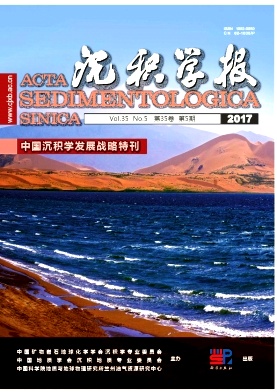Marine Carbonate Exploration History and the Basic Driving Action from Sedimentology in China
doi: 10.14027/j.cnki.cjxb.2017.05.016
- Received Date: 2017-07-25
- Rev Recd Date: 2017-08-28
- Publish Date: 2017-10-10
-
Key words:
- marine carbonate exploration /
- karst reservoir /
- reef-bank reservoir /
- dolomite reservoir /
- hydrodynamic model
Abstract: Reviewed the development of the carbonate oil & gas exploration in China, there have three stages:the first stage is in the later 20th century, represented by the Jingbian gas field in Ordos Basin discov ered from karstic carbonate reservoirs at its central palaeouplift, the second stage is in the 2000s, represented by the Puguang gas field of Sichuan Basin discovered from reef-bank reservoir of the platform edge, and the third stage is 2010 up to now represented by intracratonic dolomite reservoirs in Ordos Basin. Three basic types of reservoir hydrodynamic model is the basic driving factors of three carbonate exploration stages:the macro distribution of karst reservoir in the early stage of carbonate exploration is controlled by atmospheric fresh water karstification, the macro distribution of reef-bank reservoir in the second stage is controlled by wave action of the platform edge, and the macro distribution of intracratonic dolomite reservoir is controlled by tidal action of epeiric sea. The ancient hydrogeological system of the atmospheric fresh water model not only plays the role for the karst reservoir in the uplift zone near the unconformity surface, but also in the low structural parts and the carbonate buried away from the unconformity surface linked by fracture. Furthermore, it is worth noting that penecontemporaneous karst caused by the short exposure period is an important exploration direction in the future. Wave controlling platform margin reef-bank model have many structural types, such as "platforms surrounded by a basin", "basins surrounded by a platform" and "platforms cut by basins". Their reservoir macro-distribution is all controlled by wave action, and basically fit the Wilson carbonate platform model, just has different complex shapes. Identification on the deep concealed rift and its peripheral reef facies belt is the key factor for this type of carbonate exploration. Tidal controlling epeiric sea dolomite model guides the intracratonic carbonate exploration. This type of dolomite reservoir occurs broadly in thin interbed sheet, its macro-distribution controlled by the tidal flat progradation wedge and mosaic of tidal flat islands, which is an important new exploration field.
| Citation: | CHEN AnQing, HOU MingCai, CHEN HongDe, XU ShengLin, ZHONG YiJiang, LIU WenJun. Marine Carbonate Exploration History and the Basic Driving Action from Sedimentology in China[J]. Acta Sedimentologica Sinica, 2017, 35(5): 1054-1062. doi: 10.14027/j.cnki.cjxb.2017.05.016 |






 DownLoad:
DownLoad: